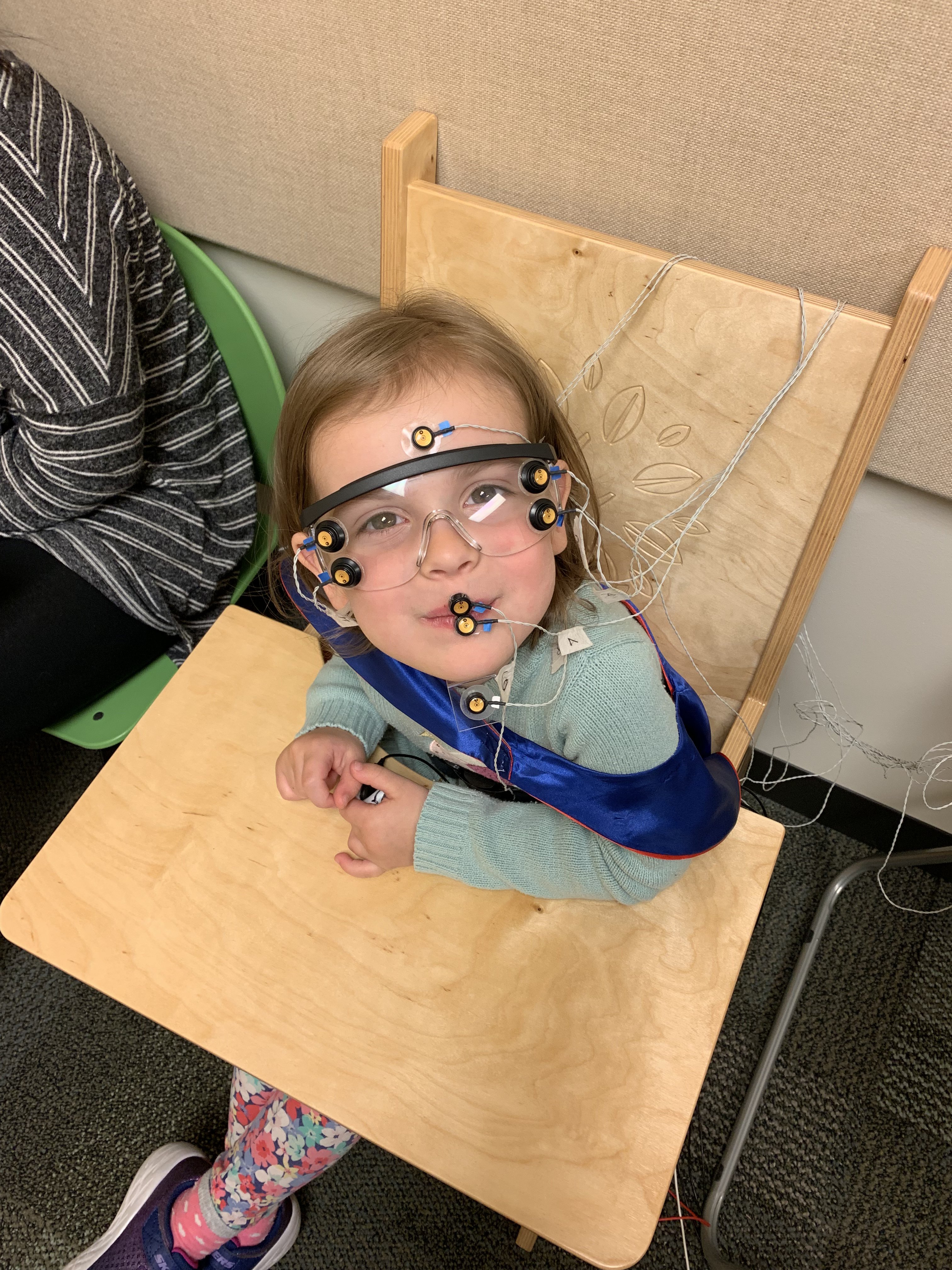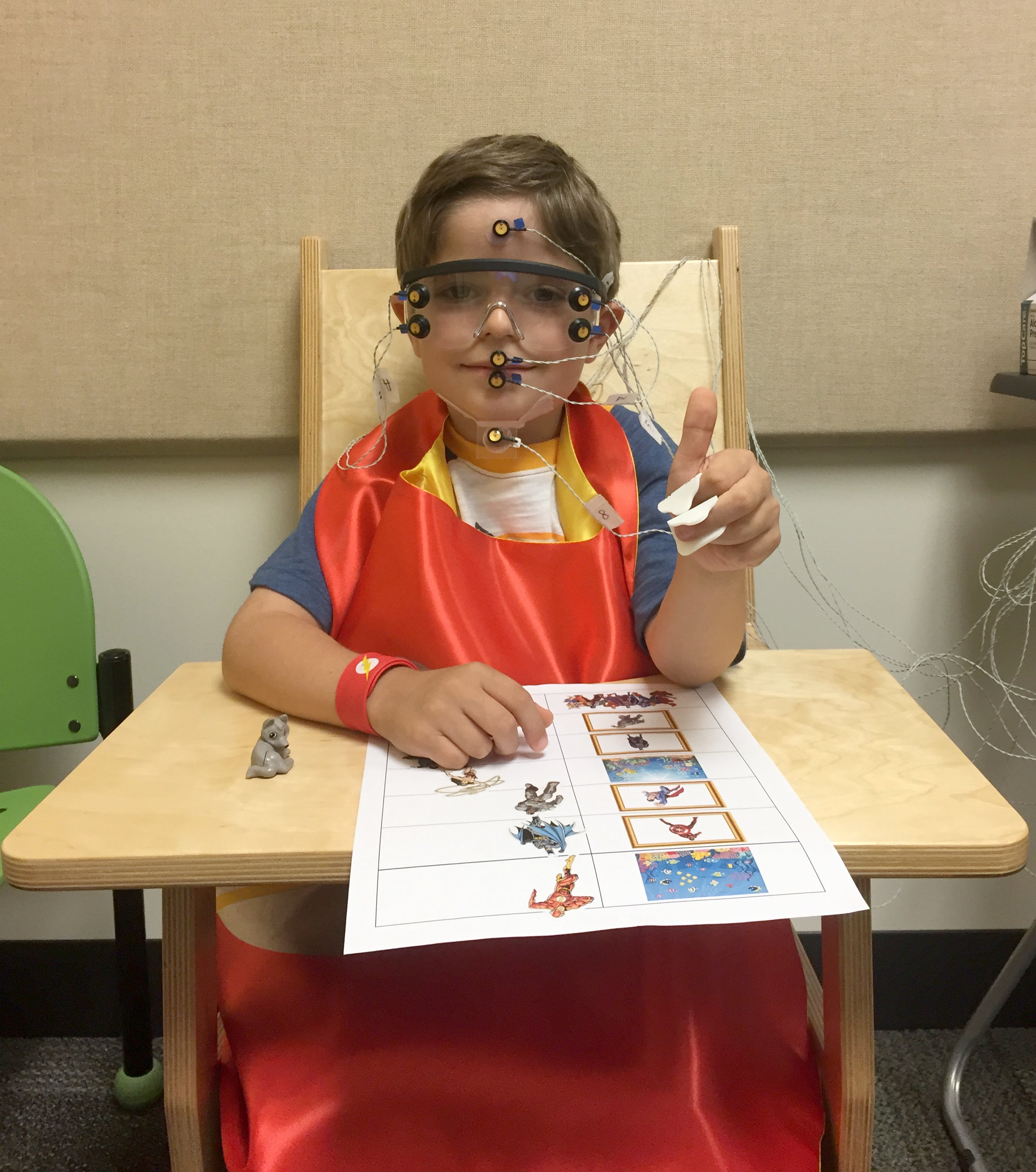NIH Grant Funds Innovative Study on Childhood Stuttering
CSD professor Victoria Tumanova investigates how emotional processes may affect childhood stuttering.

What do Hollywood movie production companies and researchers at the Syracuse University Stuttering Research Lab have in common? Each uses sophisticated state-of-the-art equipment like infrared motion tracking cameras and body sensors – but for very different purposes. While the movie production companies use motion capture to animate digital characters, the stuttering research lab is putting it to use on Central New York-area preschool-age children in an important effort to determine what factors lead to childhood stuttering. By tracking movements of the lips and jaw during speech and analyzing data such as skin conductance and heart rate variability, researchers are using the stuttering research lab’s hi-tech equipment to examine the association between a child’s level of excitement and stuttering.
According to Victoria Tumanova, assistant professor in the College of Arts and Sciences’ Department of Communication Sciences and Disorders (CSD), a person’s emotional state can lead to profound changes in their body, including changes in how movements are controlled. “Research evidence from sports psychology and music performance points to adverse effects of stress on skilled movement,” she says. “Speech is a sequence of highly skilled and fast movements. Thus, we predict that speech movement control can also be affected by someone’s level of excitement.”

Tumanova serves as principal investigator on a grant from the National Institutes of Health (NIH) exploring the situational factors influencing speech movement control and speech motor learning in preschool-age children who stutter. She is collaborating on the project with Rachel Razza, associate professor in Falk College’s Department of Human Development and Family Sciences, Asif Salekin, assistant professor in the College of Electrical Engineering and Computer Science and Qiu Wang, associate professor in the School of Education.
Stuttering is a speech disorder that affects over 3 million people and 5% of preschool-age children in the United States. It is characterized by repetitions of sounds, syllables, or words, and emerges in preschool years during the time when children undergo rapid development of their speech motor control, language and emotional regulatory processes.
Tumanova and her team suspect that stuttering is affected by a child’s “emotional reactivity processes.” Emotional reactivity refers to how easily or intensely someone reacts emotionally to experiences in life. This study is the first to examine the effects of two important types of emotional reactivity processes – contextual and constitutional – on speech in children who stutter and their fluent peers.

“Contextual emotional reactivity” is someone’s physiological response, such as excitement, driven by a specific situation; it is variable and context-dependent. For example, if a child is at their birthday party opening gifts, they may be very excited; if the child is playing with a familiar toy, they may be calm. Tumanova says parents of children who stutter often report that their children stutter more when they experience emotional arousal or excitement, even when it is positive in nature.
On the other hand, "constitutional emotional reactivity" is the person’s inherent way of responding to their environment; it remains relatively stable over time. Some children are more outgoing, and some are more reserved; some children get easily excited, and some do not.
The group hypothesizes that increases in emotional reactivity, driven by the situational context, the child’s inherent way of responding to their environment, or by their combined influence, interfere with speech motor control and speech motor learning processes necessary for the early development of fluent speech.
By determining factors that lead to stuttering early in a child’s speech development, the team hopes to develop strategies to better identify and treat the disorder at its onset. They also expect that the results from this study will inform the assessment of risk factors for stuttering persistence and eventually contribute to improved intervention strategies.
The team is currently recruiting 3- to 5-year-old children from the Central New York area who do and do not stutter to take part in this project. If you and your preschooler are interested in participating, email Victoria Tumanova at vtumanov@syr.edu for more information.
